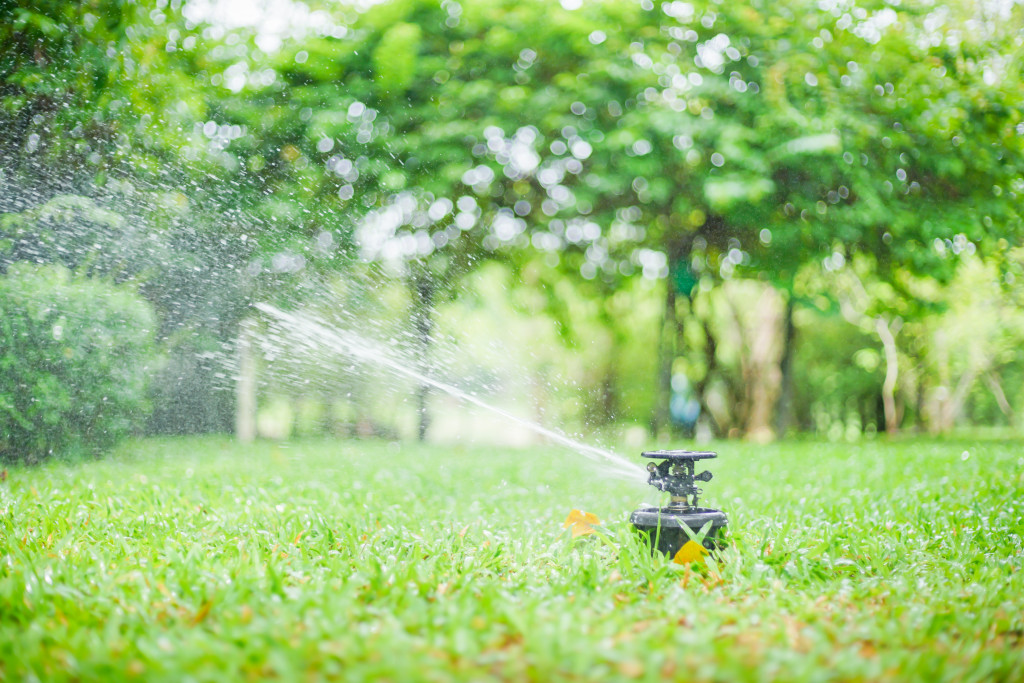Autumn is coming! Don’t forget to prepare and maintain your lawn so that you can set it up beautifully for spring. Here are some tips to make it look like your yard got the best landscaping lawn services in town:
1. Scarify
Scarifying refers to raking your lawn to lessen the thatch piling up. Thatch is the layers of debris such as roots, reeds, and palm leaves. When turf produces debris before they can even break down, thatch forms. This creates a barrier against moisture, causing plants to shrink.
Since new growths or sprouts are rare during autumn, it’s the perfect time to dig through the soil. First, choose the right rake. A 30-inch rake allows you to gather more leaves than a narrow one. A rake with a “no clog” label is a good choice, too. It collects thatch without piercing the leaves using angled tines, reducing blockages.
You can also take advantage of the breeze during fall. Rake in the same direction as the wind to move dry leaves along faster. Lastly, don’t forget to rake in rows. It saves up time and energy, as you can collect leaves without having to move back and forth.
2. Trim lawn edges
Summer is the season of sunlight and rain showers. A great time for trees and grass to grow! But overgrown grass can damage flower beds and ruin the glorious appearance of your lawn. Doing a little trimming and grooming the lawn edges can keep your yard looking sharp and crisp.
Using a half-moon edging tool, slice against a plank of wood for a straight cut. Or trim along the rope at the edge of the lawn for a curve cut. Just let the existing curve of the lawn serve as your guide.
Next, cut the law edges that grass mower couldn’t reach with long-handled edging shears. For grass covering the path, you may use a sharp knife to cut it away.
Regular trimming is advisable. But for those who can hardly maintain lawn edges, a spiked metal sheeting might be a good alternative. It maintains the outline of the lawn to prevent overgrown grasses.
3. Flatten uneven areas
Children or pets playing at the same spot in your lawn results in uneven areas. Neglecting the space can also be one reason. A bumpy area can serve as an entry for stray animals or floods when the winter rain sets in. But by leveling it out, you can prevent further issues.
Start off by assessing the area. Check out for the extent of the unleveled spot to determine the amount of effort it requires. It will also help you identify the main cause of the problem.
Once the area has been thoroughly checked, go into action. For shallow spots, shake out a thin layer of soil over it and use a garden rake or your feet to spread and flatten it. For deep low spots, usually more than two centimeters deep, use a shovel to gently peel back the edges of the lawn and fill the hollow until they lay flat on the surface.
4. Aerate Your Lawn

Aerating is the process of introducing essential elements to the lawn through small holes. This allows more air, water, and nutrients deep into the roots, helping plants survive extreme conditions such as drought.
Use either a plug aerator or a spike aerator to aerate the soil. A spike aerator creates holes in the ground with its sharp spikes. A plug aerator, on the other hand, penetrates the core and pulls out the plug of the soil using hollow tines. Many professionals recommend the use of plug aerator, as it creates more soil compaction.
5. Top-dressing your lawn
Top-dressing your lawn improves the soil biology, making it healthier. The compost consists of organic matters and microorganisms that can boost the soil structure.
Just find the right material or soil for your lawn. A combination of sand and soil is affordable and easy to spread, making it a great choice for commercial areas. But it’s still better to get the topdressing that best suits your needs.
6. Apply lawn fertilizers
Lawn fertilizers contain nitrogen, phosphorous, and potassium. These are nutrients that promote rapid growth and lush green color. They also protect the grass from frost and icy conditions, preventing damage.
You can find a variety of lawn fertilizers on the market. Just find the one that can help your lawn stand the entire cold season, preferably the ones with potash and phosphates.
A lawn is used mainly for aesthetic and recreational pleasures. But it has many other uses such as an excellent control for soil erosion and a catalyst for biodegradation. Maintaining it may seem a bit of hard work at first. The truth is that there are easy ways to keep your lawn healthy and well-groomed like a pro.




